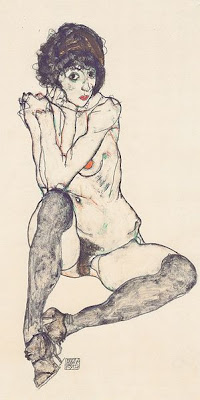I recently spent a couple of days in the capital of Slovenia, Lubljana, whilst attending a wine fair there (about which I will have more to say in another article). First visits to a country or city are often, but not always, the most impressive, as one is, literally, at one's most impressionable, acting like a sponge to all that is new, strange and beautiful around one. All that it ugly too, for that matter. As I said, a sponge...
This article will take the form of a commented snapshot album of small (or larger) things seen. I did not systematically take photographs of everything I enjoyed here, as there was so much and I really prefer just soaking it it, at least the first time around. Suffice it to say that I loved this old city, at least the central part, blissfully car-free and which I visited extensively by foot. I would highly recommend a stay in Lubljana to anyone. The people are very friendly and helpful, the hotels good and reasonably priced, the food and the wines too....what more could you want? I even found an Irish bar that shows rugby games and has 83 beers on offer! A slice of paradise, I tell you!
This article will take the form of a commented snapshot album of small (or larger) things seen. I did not systematically take photographs of everything I enjoyed here, as there was so much and I really prefer just soaking it it, at least the first time around. Suffice it to say that I loved this old city, at least the central part, blissfully car-free and which I visited extensively by foot. I would highly recommend a stay in Lubljana to anyone. The people are very friendly and helpful, the hotels good and reasonably priced, the food and the wines too....what more could you want? I even found an Irish bar that shows rugby games and has 83 beers on offer! A slice of paradise, I tell you!
The dragon is the emblem of Lubljana. This is one of the many turn-of-the-20th century sculptures to be found in Lubljana, and it is one of four of these beasties that guard one of the bridges that span the Ljubljanica River. The bridge is called, not too surprisingly, the Dragon Bridge, and it leads to the splendid market were you can see scenes like the two below, buy great fresh goods, or eat and drink in surrounding cafés. It was designed by the Croatian architect Jurij Zainovich (the bridge I mean).
Lubljana, at least the old town, seemed to me to be happily low profile and discreet, and most of the streets are gloriously free of those dreadfully ubiquitous "big brand" shops (mostly cloths) that totally pollute almost all of the world's cities these days, making you wonder just where you are at times. On the contrary, the streets I walked were full of shops selling odd antiques, books, locally made stuff of all kinds, good food, and cafés and restaurants of all descriptions (and I didn't see a single Chinese restaurant!). Add to this the fact that it's architecture is quite fascinating, occasionally off-key with great colours on some of the facades, and full of sometimes quirky details and a true sense of craftsmanship. I found some similarities in feel to Prague, with perhaps a more "southern" touch.
The lamp post above, like several others and the famous triple bridge (see first photo below), was designed by the local architect Joz Plecnik. As you can see, Lubljana also looks great at night, with some very subtle lighting making the buildings look sharp and intricate, yet very different one from another.
Presumably some of the strange objects that I saw in the street were due to the pre-Christmas decorations, like this giant teepee-like construction (above) that went the height of a two-story house and stood on the fork between three streets near my hotel. And decorations of various descriptions seem to be into hanging objects, like this collection of shoes supended between two buildings.
Or this one...
There are many more padlocks on either side of this bridge, left apparently by lovers who have sealed a pact, presumably throwing away the key to their hearts into the river below (youth is so rash...but then are they all youths?).
There is also evidence in the streets of contemporary art and contemprary philosophy colluding. What is the world coming to?
http://www.adorahotel.si/
My room was very comfortable, practically designed, simple, light, impeccably clean and inexpensive. And the staff were particularly helpful and friendly. What more could you want?
Get going!







































